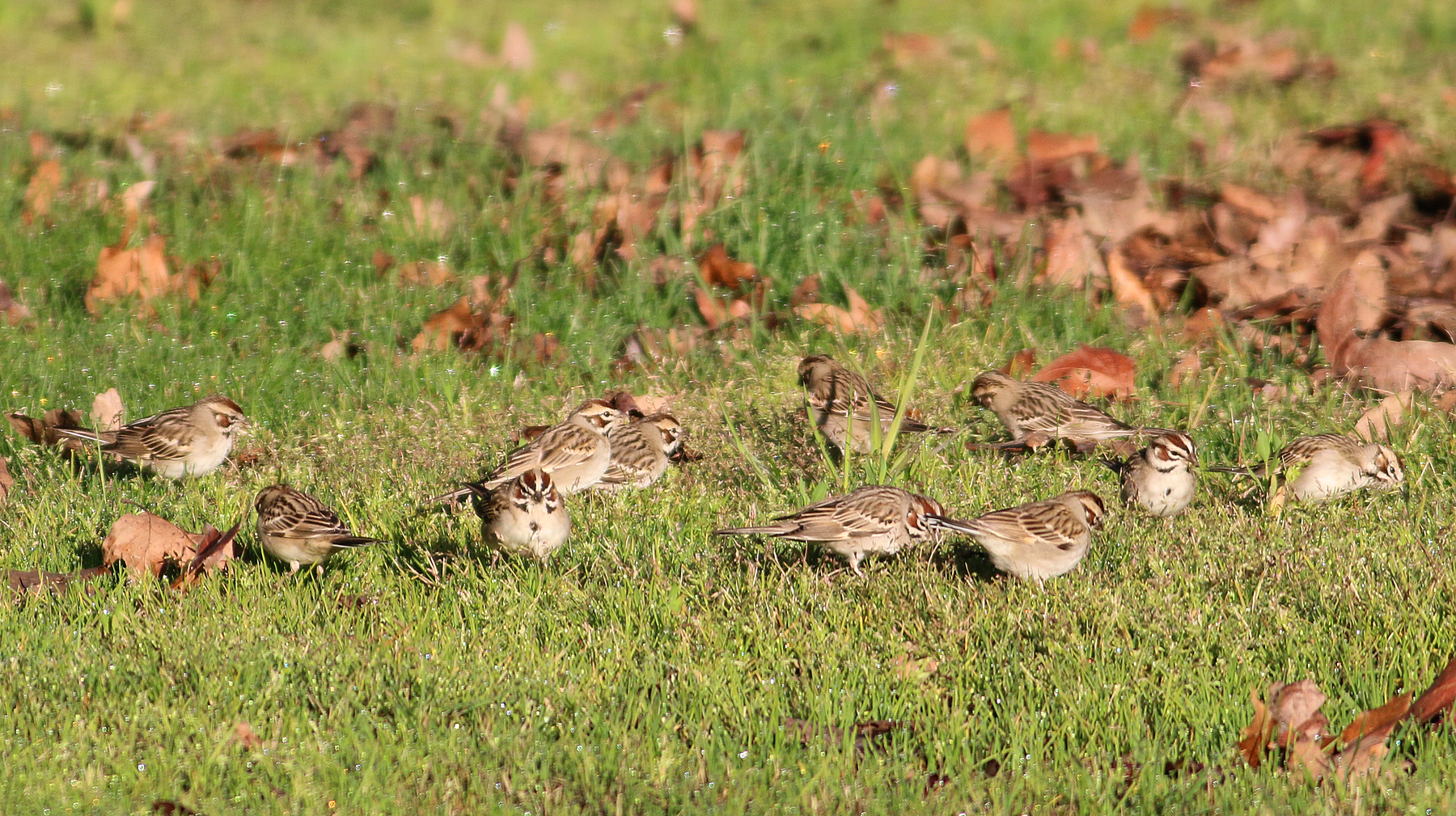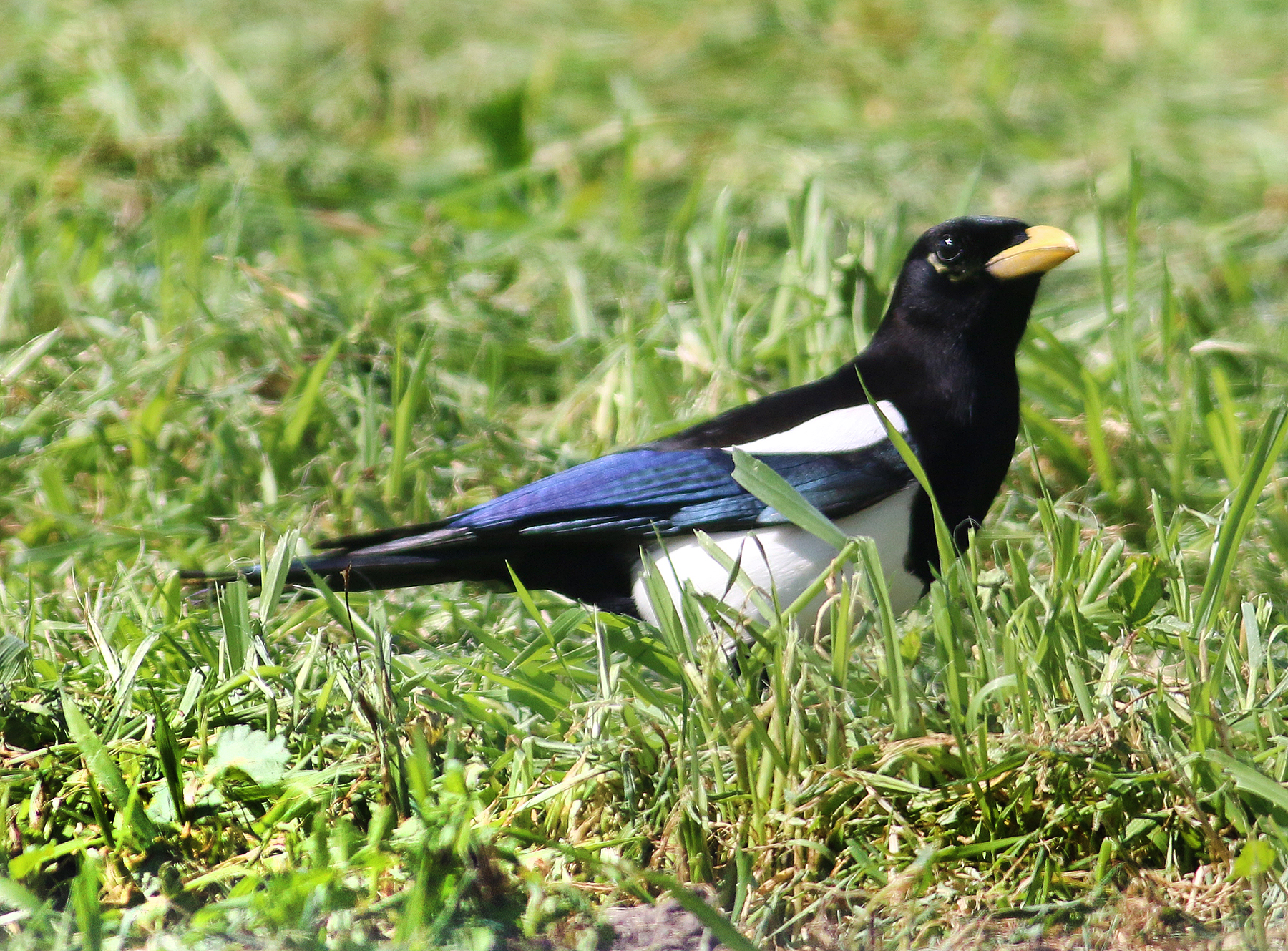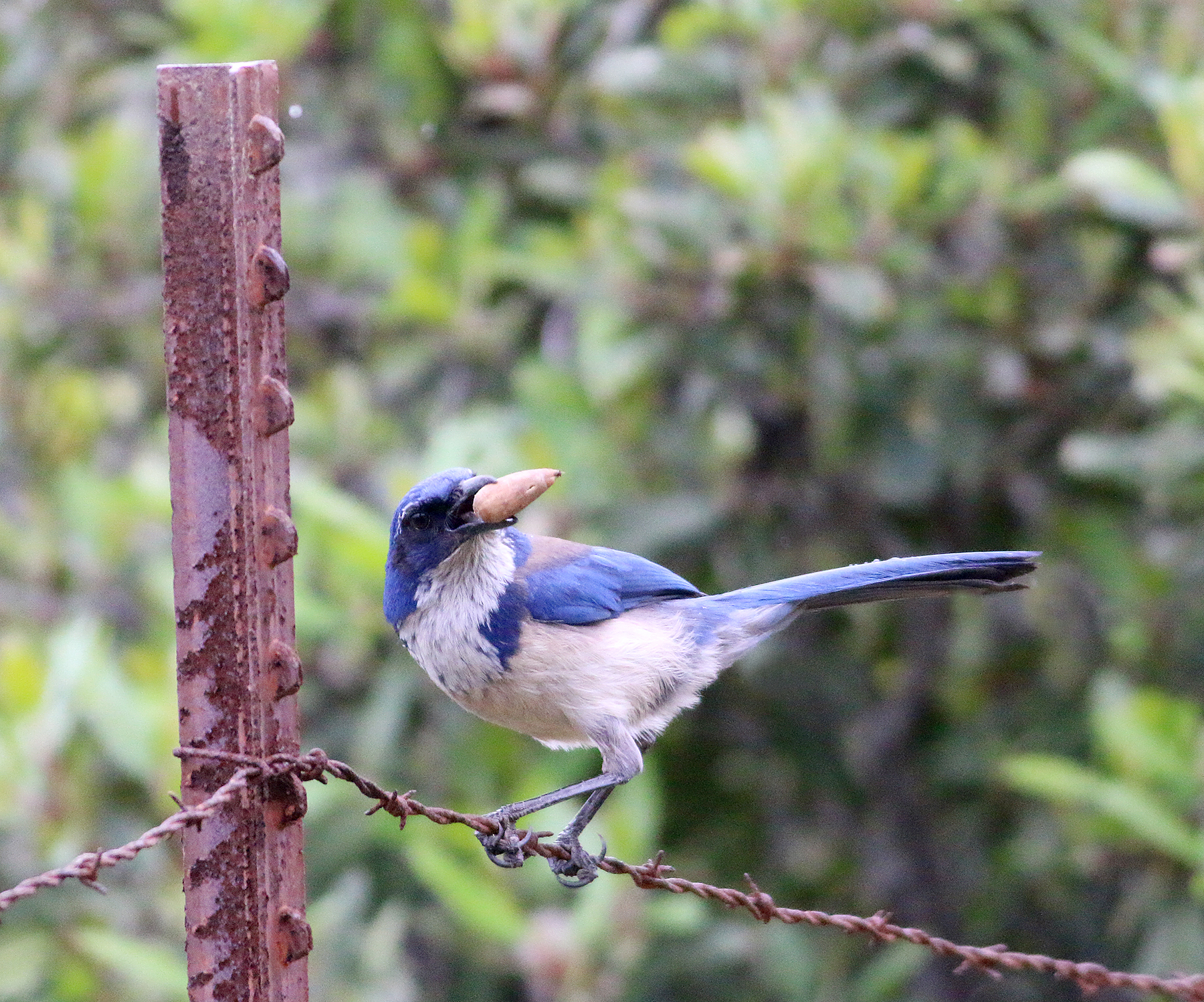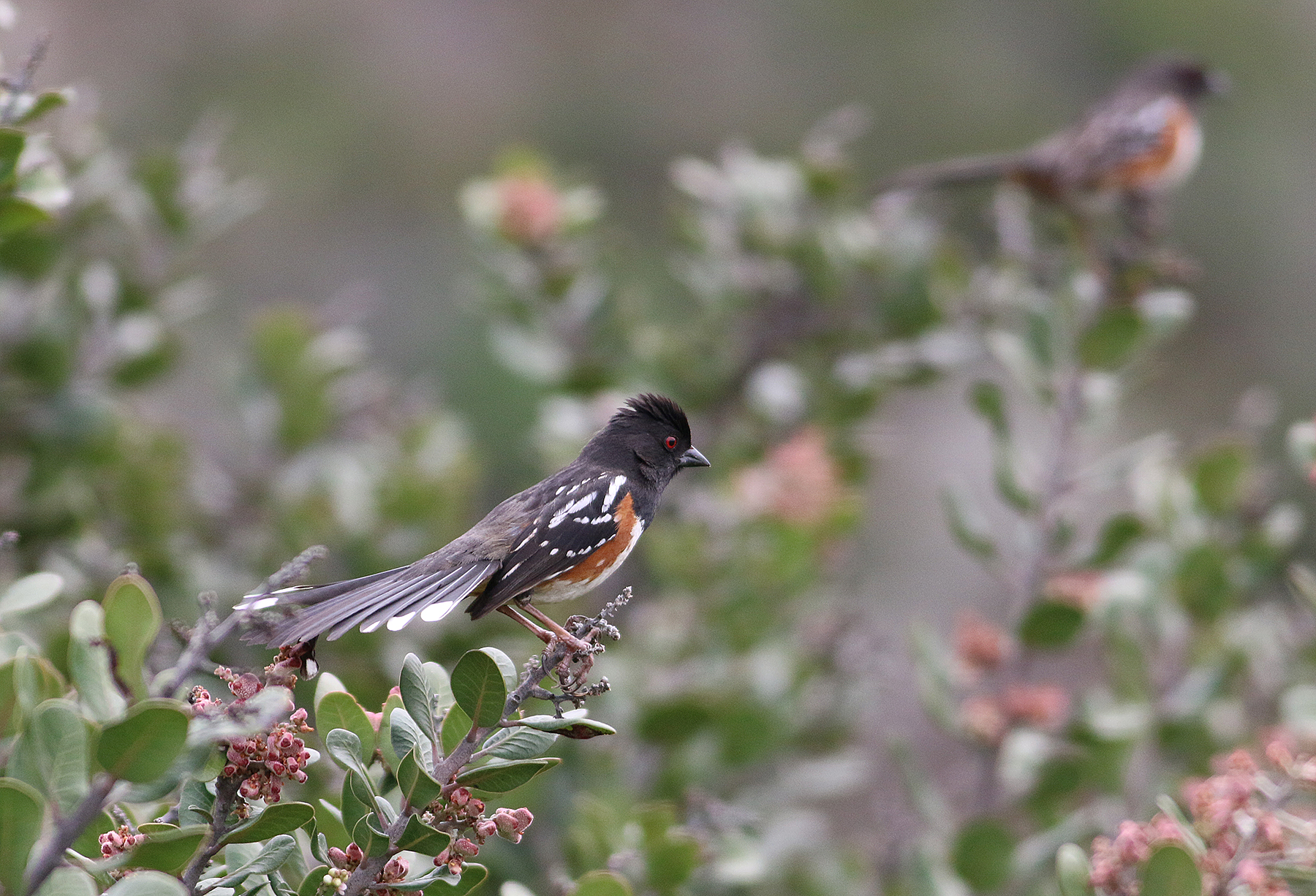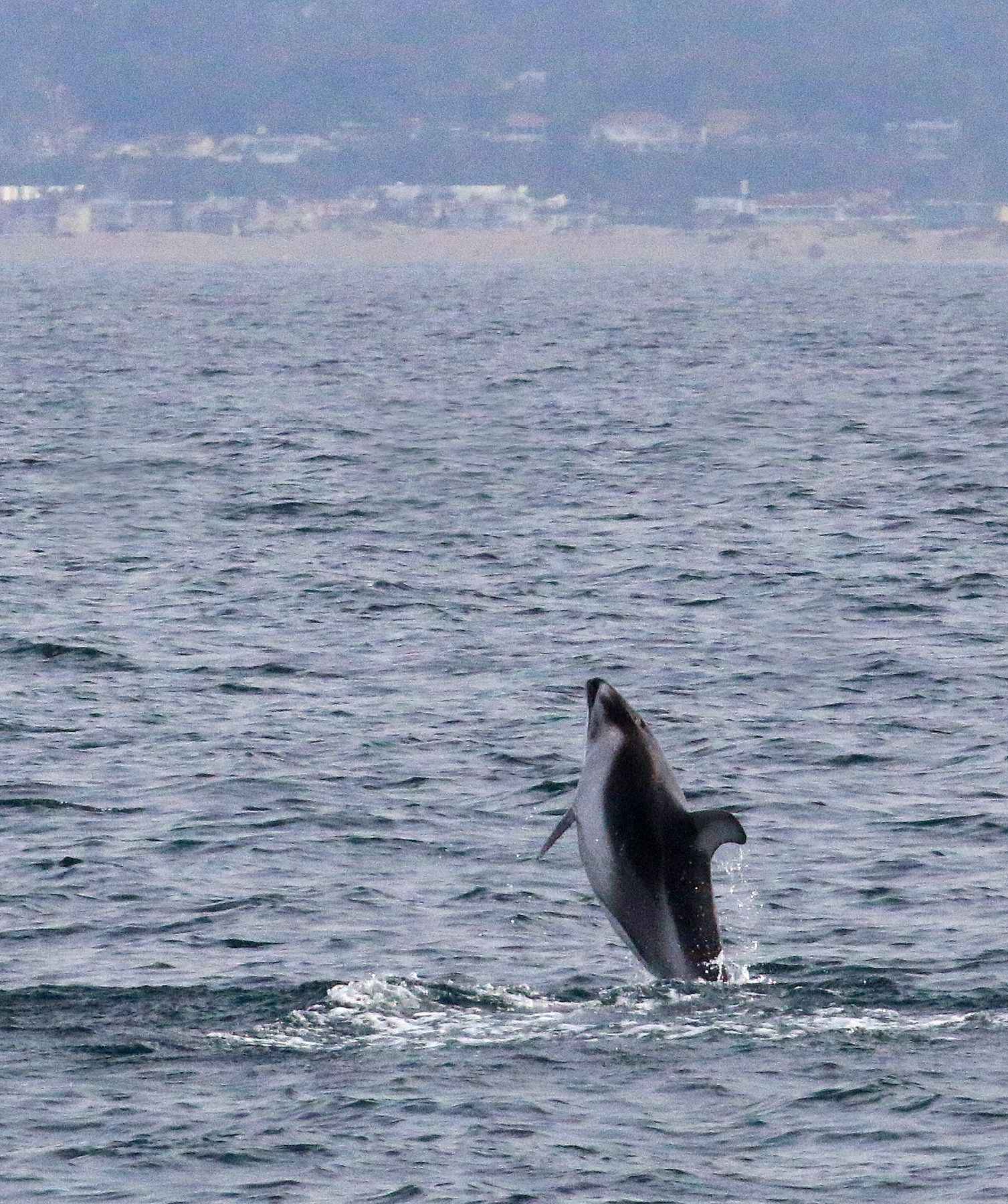The final portion of our trip moved north of LA into the Santa Barbara area. Our goal here shifted somewhat, from just finding good overall birding areas, towards looking for rarities with other species as bonuses. Our first stop was Lake Piru Recreation Area, where we were hoping to spot California Condors. We had been watching reports from this location for the past week or two before starting our trip, as it seemed to be the most reliable southern location for condors. Apparently there was a dead cow in the area that the birds were feeding on (Was it was placed there intentionally? We don’t know.). But during our trip a report came out saying that the carcass was nearly gone, so we were desperately hoping that the condors would remain for us.
As background, it is perhaps worthwhile to realize how rare California Condors are. In 1982 there were only 23 California Condors left in the wild, so they were all captured and put into captive breeding programs. As of 2017, the total population was up to 463 birds, with 173 in captivity and 290 in the wild, in California (170), Arizona/Utah (82), and Baja MX (38).
We arrived at Lake Piru in early morning, assuming that they would take off on the thermals when the air started warming up. It wasn’t clear to us where they were being seen, so we just started birding, keeping a watchful eye on the clear blue sky. There was quite a bit of activity, but mostly due to the species that we now had grown accustomed to: Say’s and Black Phoebes, Cassin’s Kingbird, Audubon’s Warblers, Spotted Towhee, Lesser Goldfinch, Bewick’s Wren, Western Bluebird, California Scrub-jay, and Common Ravens. The first new bird for the trip was a flock of ~26 Lark Sparrows. We get Lark Sparrows in New Jersey in fall as vagrants, so seeing even one is normally a treat. Seeing 26 of them on the ground at once seemed like a dream. I assume that to California birders it is absolutely normal, but we enjoyed it thoroughly.
Our second new bird was a condor. After about 30 minutes or so of birding, Jeanine suggested that we just scan the trees near the rolling pasture at one end of the lake to see if we can spot any perched condors. I thought it was a longshot, but went along with the suggestion. Thankfully I was wrong again. Within five minutes we spotted two condors in adjacent trees. Like most condors, they are wing-tagged for identification purposes, and these were condors ‘blue 16’ and ‘blue 26’. They eventually flew into another tree maybe 300 yards away where they were joined by an immature bird that lacks the orange head of the adults. After watching the distant birds through the scope and attempting distant photos, the birds flew off and rode the thermals up the ridge and out of view. We soon decided to move on too, but on our way out of the park, I noticed what I thought were condors flying above us. Pete pulled off to the side of the road, and indeed, we had at least six condors flying directly above our car, rapidly gaining altitude. What a treat. There on that California hillside we were viewing ~2% of all the wild California Condors in the world.
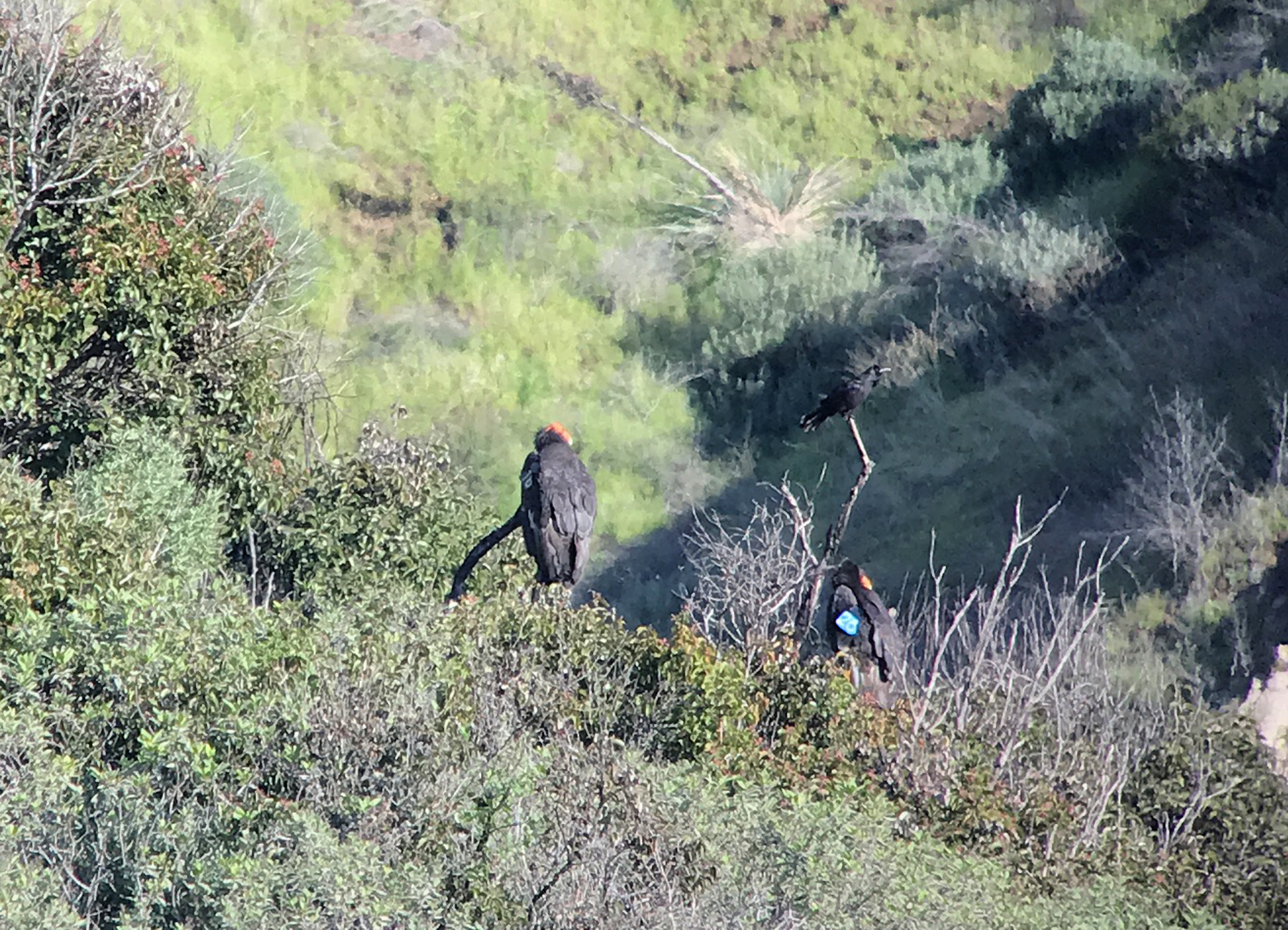
Our first view of two perched California Condors, with a Common Raven perched between them. The wing marker ‘blue 26’ can be seen on the rightmost bird.
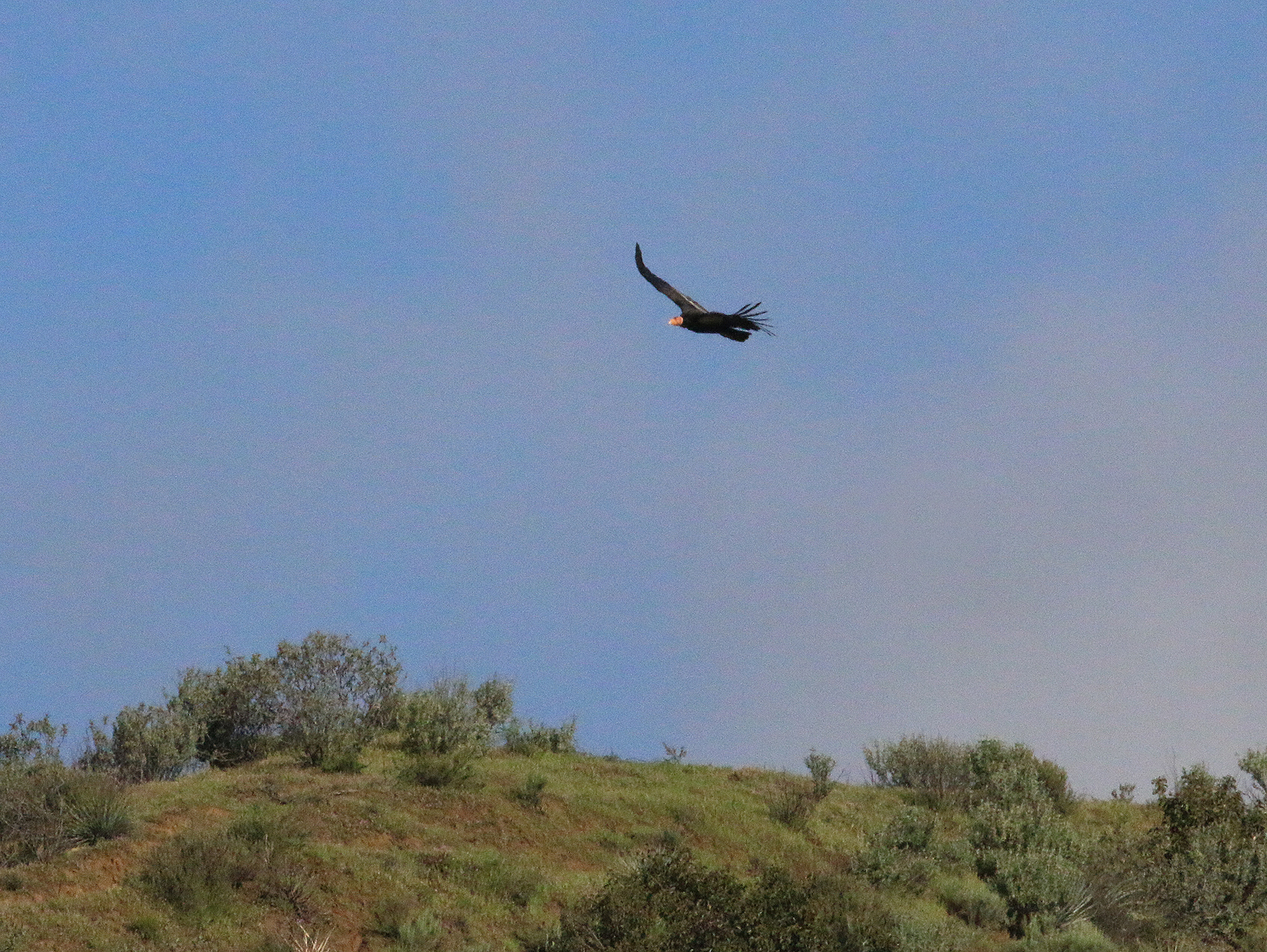
An adult California Condor soaring over the California countryside. If it weren’t for the effort of the past few decades to revive this species, this sight would have been gone forever.
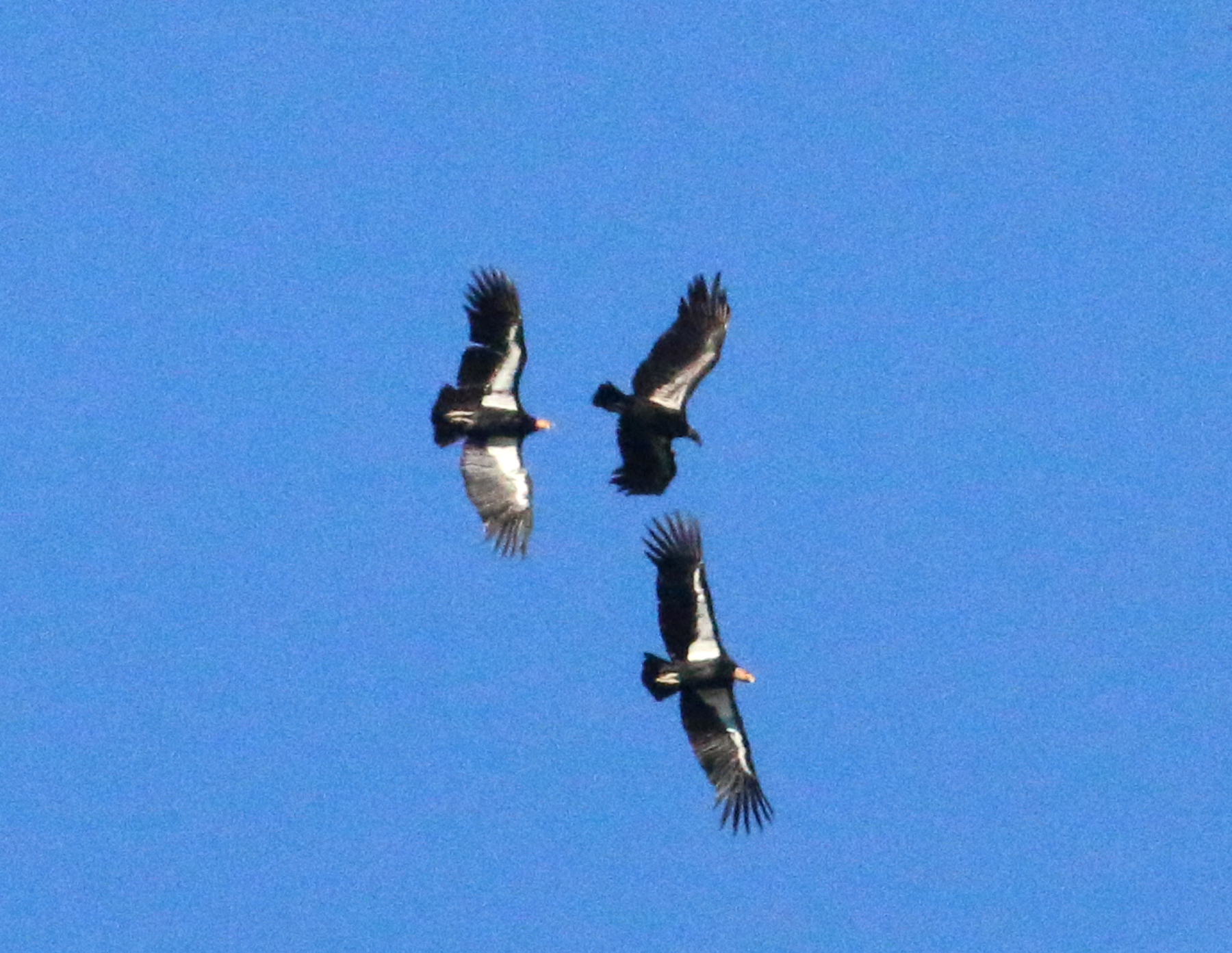
Three California Condors circling the ridge above our car at Lake Piru. The one with the black head is an immature bird. These birds have a 9 ft wingspan (compared to ‘just’ 5 1/2 ft. for a Turkey Vulture) Wow. Just wow.
Our next stop was north of Santa Barbara to the rolling hillsides in search of Yellow-billed Magpies. This is the southern-most end of the range for this species, which is one of the 18 or so birds that are endemic to the United States. In fact, it is found only in California. Moreover, this is a ‘good’ endemic, in the sense that it is morphologically distinct from any other species and not one of those ‘split’ species that are not possible to distinguish unless they are in your hand and measured. They had been seen the general area near the intersection of two nearly deserted roads: Alisos Rd. and Happy Canyon Rd. (Happy Canyon…a portent of good things to come?). Well, we drove those roads nearly a mile in each direction from that intersection with no luck. We couldn’t have missed them, could we? After all, the habitat is wide open and they are a large and showy and social species…pretty much a ‘can’t miss’ bird. Or so we thought. So should we move on to a different location, or try again? Being stubborn (or should I say ‘persistent’?) birders, we drove back again, and this time Jeanine spotted a pair flying across a pasture only to disappear into thick trees surrounding a roadside ranch house. I always feel odd pointing my binoculars anywhere near a house, so we drove on, and this time hit the motherload, with Jeanine again spotting more, but this time a group of seven or so feeding mostly on the ground just ahead of our car. We waited patiently, and the birds kept strolling past the car and into good light for a few photos. When they flew up into the roadside oak they seemingly disappeared even though there were no leaves on the tree. That made for a great day, with the rarest species in North America and an endemic within a few hours of each other.

Here’s an example of the lovely Yellow-billed Magpie country. We drove along these kinds of roads scanning the fields and the bare oaks for magpies. Photo by Jeanine Apgar.
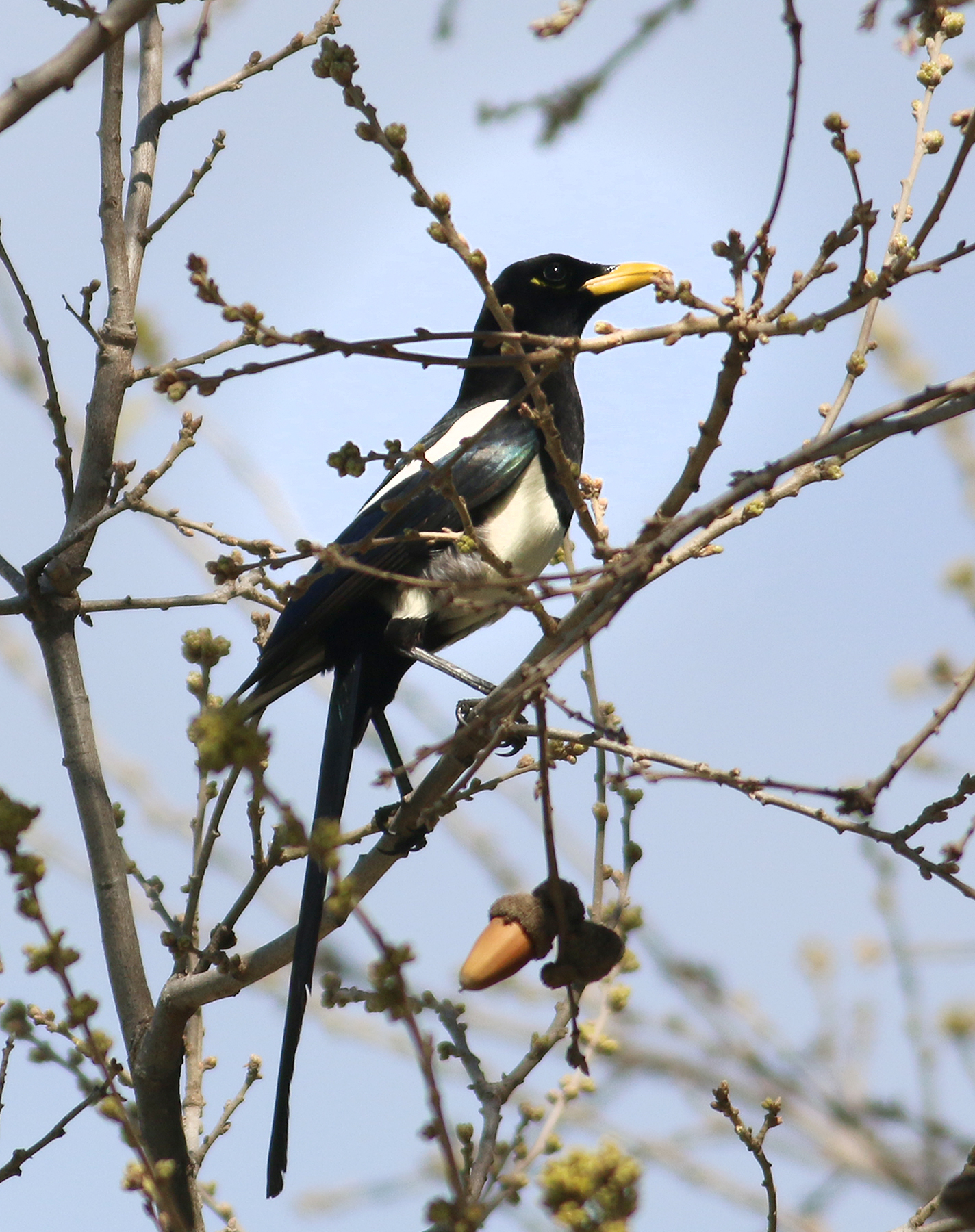
Yellow-billed Magpie in an oak tree, showing its elongated tail. It was surprising how tough it was for us to spot them in this tree despite the lack of leaves.
The following day we went in search of our next US endemic, taking the boat trip to Channel Islands National Park in search of Island Scrub-jays. Good fortune was on our side on this trip, as it was supposed to be raining through most of the day, but it didn’t rain until our boat docked at the end of the day. Seriously. Amazing timing! On the trip out to Santa Cruz Island we tried pelagic birding, spotting some Pacific Loons (another species that we see in small numbers in NJ), Cassin’s Auklets (which were tough for us to identify), and near the island the more obvious Pigeon Guillemots with their large white wing patch. Since this island is the only place in the world to see Island Scrub-jays, the pressure was on, but within five minutes or so of beginning our hike, Pete spotted a distant one in a bare tree. Whew. With the pressure off, now we could enjoy the walk. We ended up seeing at least four more, with much better views, along with a super displaying Spotted Towhee while enjoying lunch.
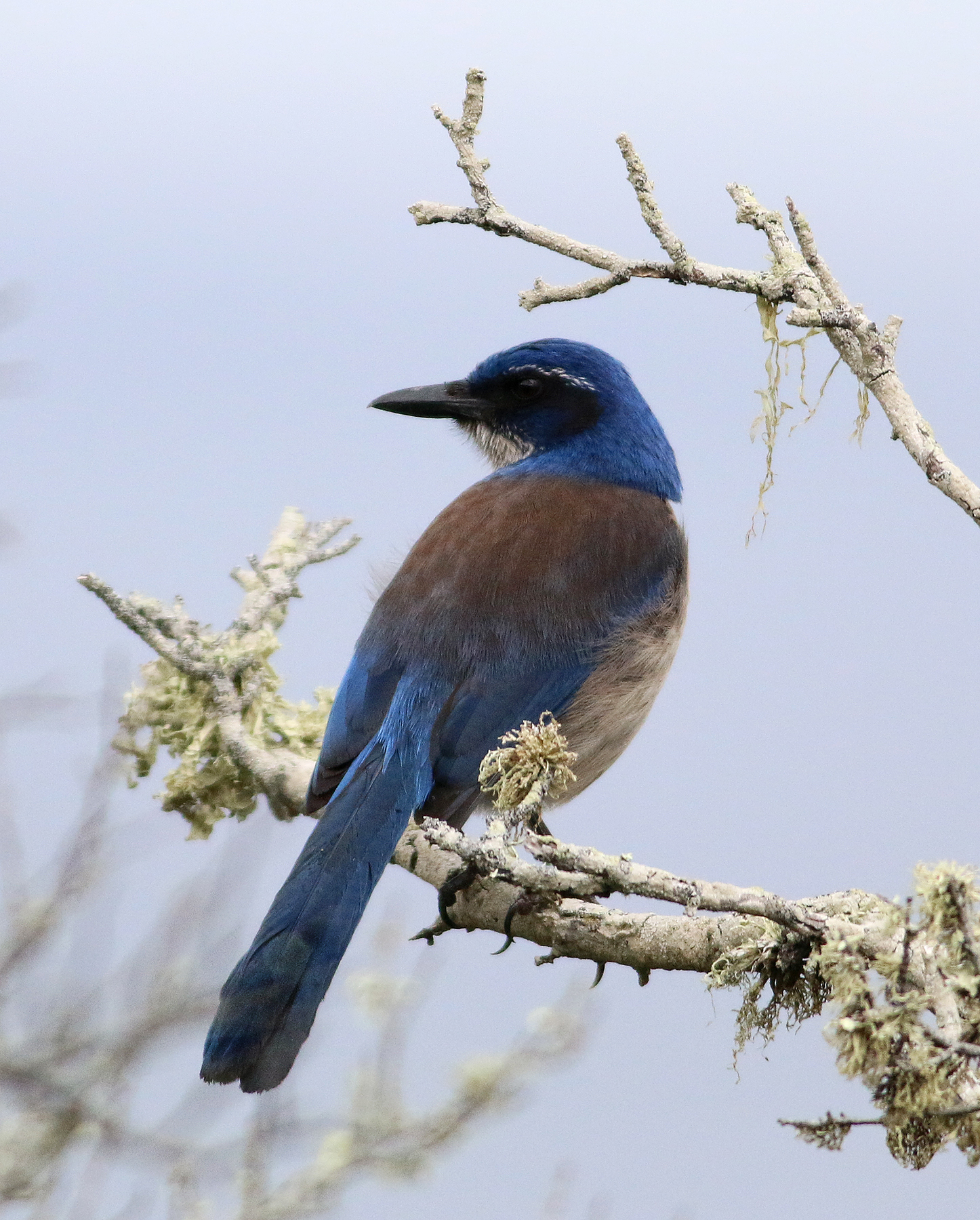
Here’s a classic cooperative Island Scrub-jay. They are distinguished from the similar California Scrub-jay by having a blacker facial mask and a cap that is darker blue.
Thus ended our birding tour of southern California. Can I make any recommendations to others going there for the first time? First of all, although we explored only a small section of California, for the trip that I described in these blog entries, it is still quite a large area to cover in ten days. If we were doing it again, I’d spend 12-to-14 days to cover the same area and feel less rushed. Some birders consider the Salton Sea a ‘must ‘ stop for any southern California tour. We could have opted for going to the Salton Sea instead of trying for the rarities (condor, magpie, and scrub-jay), but those are three five-star species, so I feel it was worth it in the end, but that is a matter of personal choice. With regard to the timing, we arrived before the peak of migration, so we could have found more western species (tanagers, vireos, orioles, terns, etc.) if we traveled in April or May, but part of our goal was simply to escape the cold and relatively birdless March in New Jersey, so for us it was good timing. (And yes, it did snow in NJ while we were away.) For the entire trip we ended with 156 species seen, with 36 new lifers for Jeanine and 12 for me. Although those numbers would pale in comparison to more exotic locations in South America, that is pretty darn good for a US destination. So give it a shot and enjoy. Contact me (greg@birdquiz.net) if you have any question or comments.
